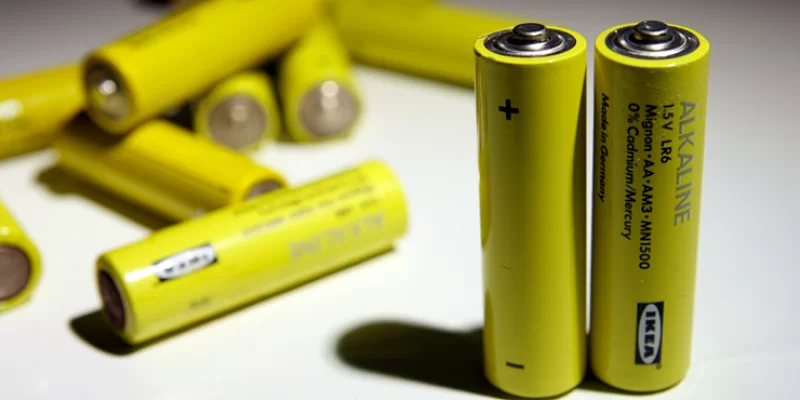
Compare saline and alkaline batteries
The modern high-tech world is hard to imagine without innovative electronic technology. For the operation of some of its varieties, reliable batteries are required, in the role of which standard finger batteries are usually used. The world market offers consumers various options for such products, the most popular of which are salt and alkaline. How are they different and which is better? Our experts found out.

Salt batteries: features, device
The salt battery has long been considered one of the most popular batteries, and this despite the appearance and device that have not changed since the moment of appearance. It’s hard to imagine, but for almost 150 years the salt battery was the market leader in electrical goods until recently. The ideal combination of quality characteristics and reasonable prices allowed us to confidently hold the palm.
The element is extremely simple. The basis is the anode — zinc powder, impregnating the active substance of the battery — manganese dioxide, a zinc cathode with special additives (to slow down the corrosion process in zinc) and the electrolyte itself, represented by ammonium chloride. It is thanks to the latter that the salt battery got its name, because the electrolyte contained in it is, in fact, salt.
Between the electrodes of the salt battery there is a separator — a gasket that isolates the reagent from each other and prevents them from mixing with each other. But at the same time, it passes electrolyte through itself. As a result, a reaction occurs between the anode, cathode and directly ammonium chloride, leading to the release of an electric current. The latter falls on the batteries located inside, and from them to the electrodes that transfer the final charge to the electronic device in which the salt battery is located.
Advantages
-
Low cost (due to low material costs, a simple production process);
-
Simplicity and comfort of operation;
-
Almost universal parameters (characteristics of batteries allow them to be used in most areas).
Flaws
-
A noticeable decrease in the capacity of the battery with an increase in the discharge current to the level required by modern electronic devices;
-
Decreased quality characteristics at low temperatures;
-
Insignificant shelf life (no more than 2 years);
-
Significant reduction in voltage during the discharge;
-
Oxidation of the shell due to insufficient tightness.
ON A NOTE. Salt batteries can be used almost 100%. It would seem that in a situation where there is practically no charge left and the battery is «exhausted», you can briefly extend its viability. To do this, you need to pull it out of the appliance and knock a little on the case. So you can even out lumps of electrolyte: this will allow the battery to work for some more time.
Alkaline batteries: features, device
Alkaline (alkaline) batteries began to be produced much later than salt batteries, and the first company to introduce the product to the global electronics market was Duracell, which remains one of the leaders in its niche today.
At the heart of an alkaline (alkaline) battery, like a salt one, an anode or a reducing agent is a powdery mass impregnated with an electrolyte, a cathode represented by manganese dioxide, and an electrolyte. The role of the latter is potassium hydroxide, that is, alkali, from which the name of the battery appeared. Alkaline batteries are called alkaline only because alkali in translation from English sounds like “alkaline”.
The principle of operation of alkaline batteries is similar to salt batteries: the anode and cathode, when exposed to electrolyte, generate a current transmitted to the down conductors located inside the battery. At the same time, in general, the efficiency of the product is much higher than that of the analogue considered above. Firstly, due to the zinc reducing agent, the probability of the metal going into an inactive state under the influence of a high discharge current is reduced.
Secondly, the zinc electrode in powder form provides an increased percentage of active material used compared to the salt counterpart. Thirdly, a constant discharge with increased current is not so terrible for alkaline batteries: thanks to the alkaline electrolyte, a significant capacity of the product is provided (7-10 times higher than in salt counterparts).
Advantages
-
Significant capacity indicators;
-
High performance at medium loads;
-
Slow self-discharge;
-
Maintaining quality characteristics at low temperatures;
-
high-quality sealing;
-
Significant shelf life — up to 7 years (in some cases — up to 10).
Flaws
-
Significant weight;
-
Significant price;
-
Instantaneous failure when the electrolyte is discharged.
ON A NOTE. Since the product in question is notable for its far from cheap price and high power, it is most appropriate to use it in suitable cases. Alkaline batteries are indispensable when it is necessary to use medium and high current consumption, for example, in cameras, powerful flashlights, voice recorders, etc.
Comparative analysis
So, after carefully studying the features of both products, it will not be superfluous to mention their identical features:
-
Same size (standard for all batteries);
-
Possibility of application for the same devices (in this case, the salt element will fail faster);
-
Identical voltage;
-
The impossibility of recharging (otherwise it leads to an explosion of the element);
-
The need for proper disposal after the end of the operation process (today, most countries pay considerable attention to this issue, creating special collection points, from where batteries go to recycling plants for their secondary use).
And now about the main differences. Our experts made a comparison and entered the results in a table.
|
|
|
|
|
|
550 — 1500 mAh
|
1000 — 2980 mAh
|
|
|
Impossible
|
Possible
|
|
|
2 years
|
7-10 years old
|
|
|
Insufficient
|
Reliable
|
Добавить комментарий
Для отправки комментария вам необходимо авторизоваться.